Easy Creamy ’Nduja Pasta
’Nduja is a flavourful, spicy, spreadable pork sausage from Italy’s Calabria region. This simple dish combines it with cream and pasta for a proper ten-minute meal. For a bit of texture and colour, we’ll finish it with a quick Parmesan and parsley gratin.
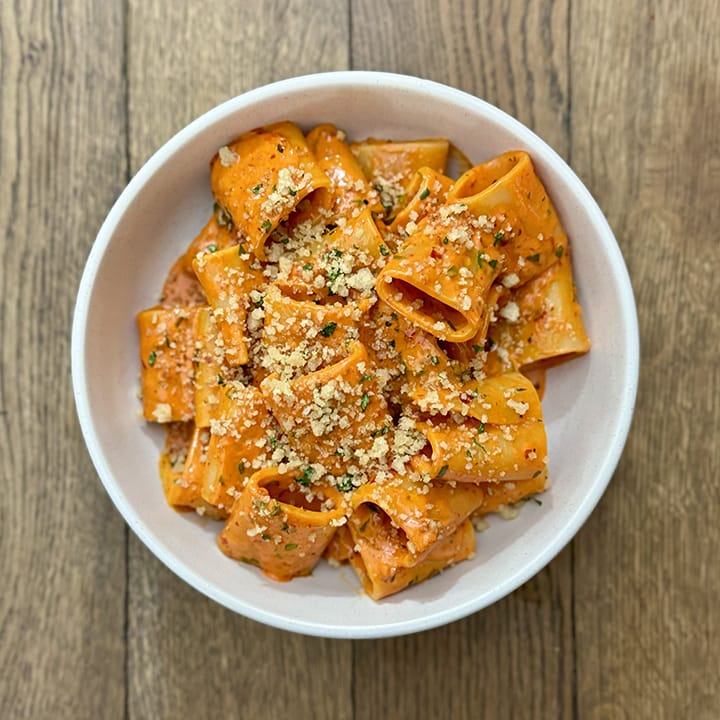
Before we start, two words of warning:
- This dish does not appreciate high temperatures. Keep things on a low heat—trust me. More on this as we get to it. As a result, it might be worth preheating some pasta dishes to serve in.
- There are no real quantities with this recipe. I have always just freestyled this meal and adjusted to taste and audience. It’s an incredibly simple recipe that is relatively tolerant, but I’ll address the issue of leftover ingredients at the end.
You Will Need
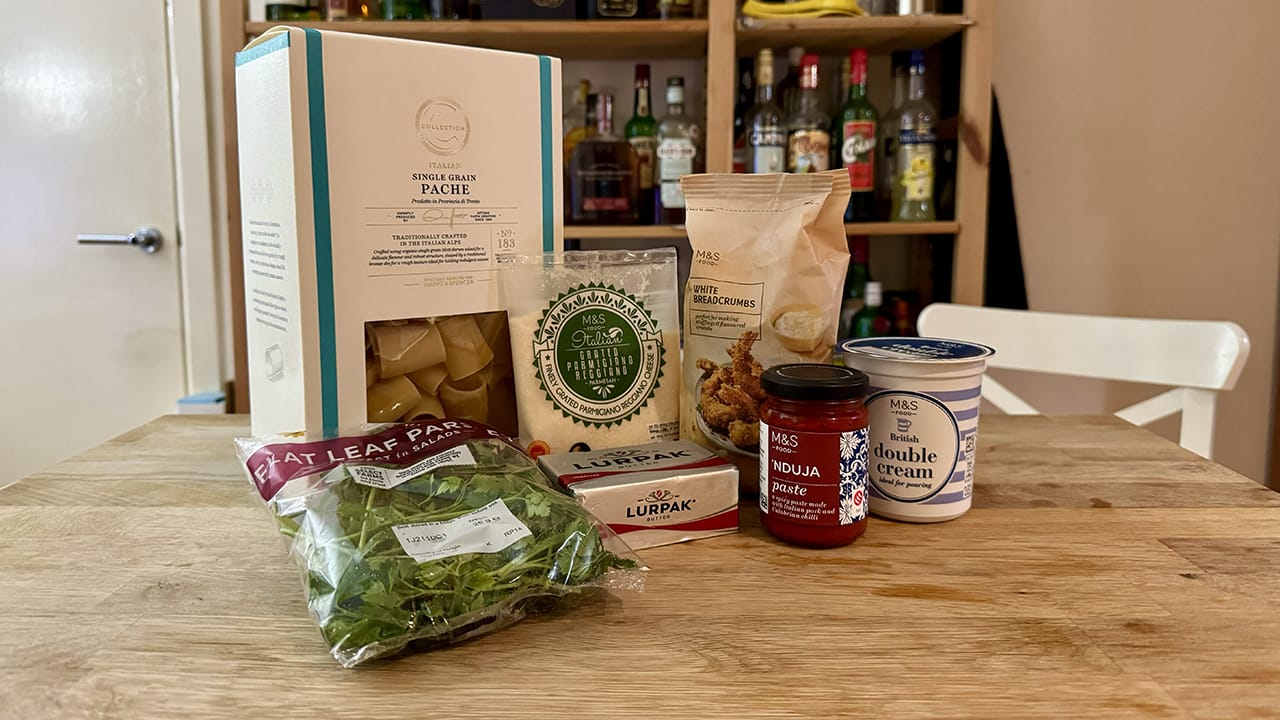
Again, unofficially, this should serve two people, or one very hungry person and some leftovers.
Creamy ’nduja pasta:
- Pasta
- I recommend paccheri for big, full pasta, or orecchiette for spoonfuls of deliciously little shapes. Here, I’m using paccheri.
- ’Nduja paste
- We’re cooking it, so you don’t need the really good stuff that you’d usually serve on bread.
- Double cream
- Fresh flat leaf parsley
- Parmigiano Reggiano
- Known more commonly as Parmesan here in the UK.
Gratin (optional):
- Breadcrumbs
- Butter
Gratin
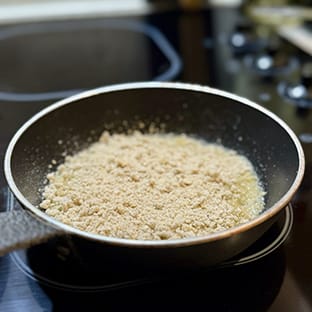
We’ll build the (optional) gratin first as it doesn’t need to be served hot—we can leave it to one side while we focus on the main event, next.
In a small, preferably nonstick pan, slowly melt enough butter to coat the bottom. Once melted, evenly sprinkle a layer of breadcrumbs, careful to avoid any clumping.
Gently toss to coat and slowly toast. After a few minutes, when starting to turn golden, add a sprinkle of Parmesan. Again, be careful to avoid clumping as it will cause the breadcrumbs to stick, losing their crunchy texture. Keep tossing, coating, and toasting until they look delicious. Always on a low heat.
Once they look about right, remove from the heat and mix in some finely chopped parsley. Set aside for later.
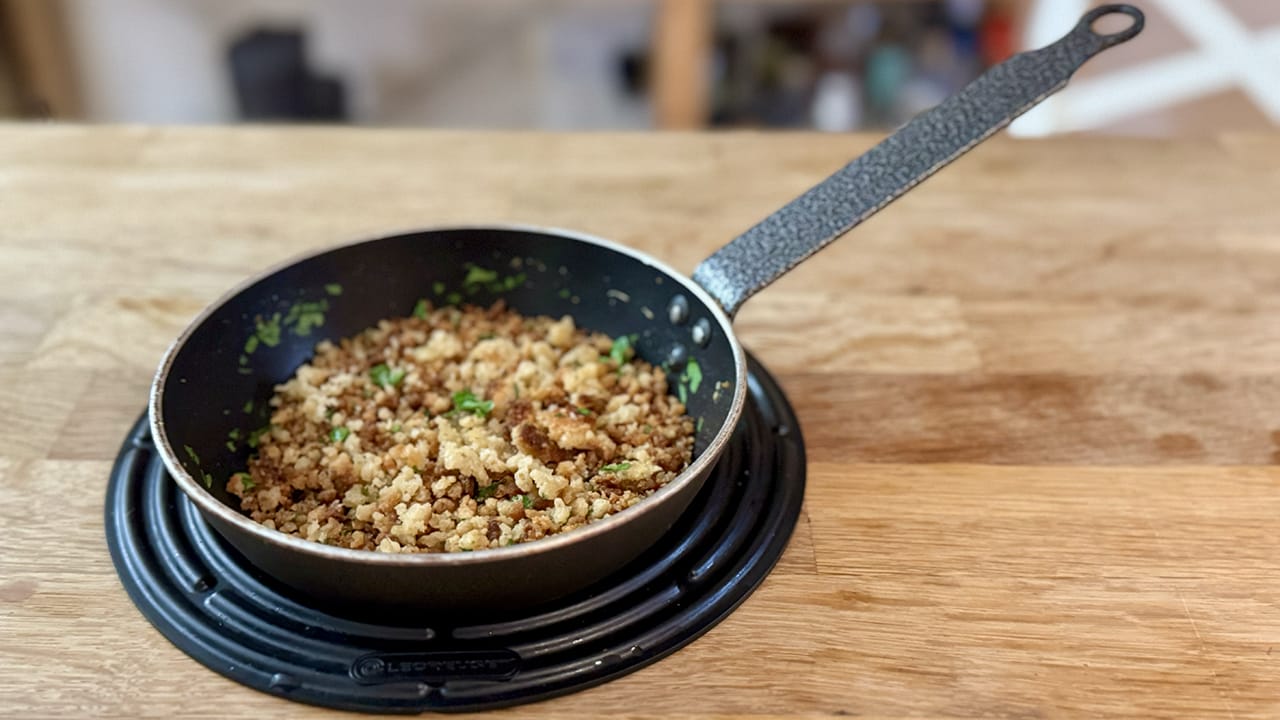
Creamy ’Nduja Sauce
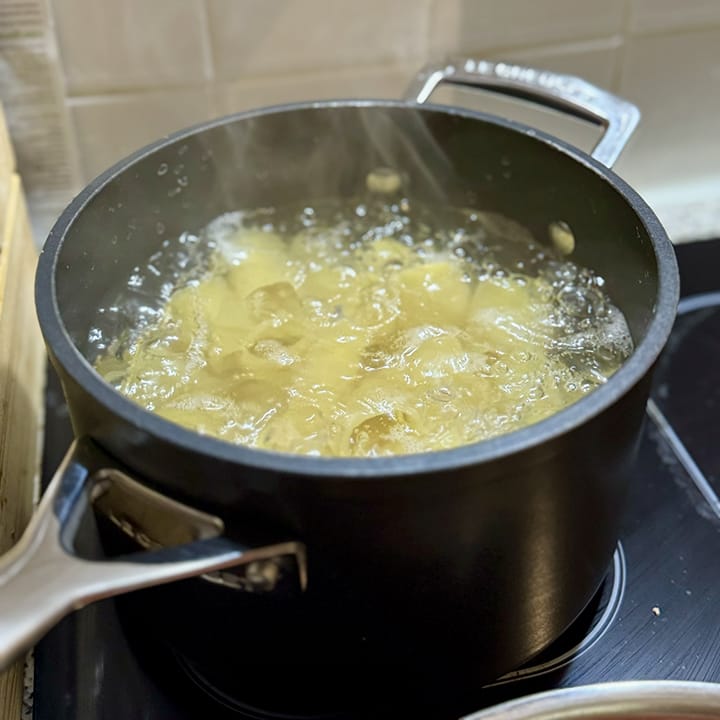
The sauce can be made to take about as long as your pasta as, remember, we need to cook over a very low heat. Get a large pan of heavily salted water boiling, add your pasta, and cook about two minutes short of what the pack tells you (for me, that’s 10 minutes).
While your pasta is cooking, take a huge dollop of ’nduja and slowly render it down over a very low heat. I can’t stress enough how much this dish needs low temperatures. This step comes together remarkably quickly, so don’t worry if it only takes a few minutes—we can hold the sauce until your pasta is ready.
Gently cook the ’nduja down, stirring occasionally to help break it up:
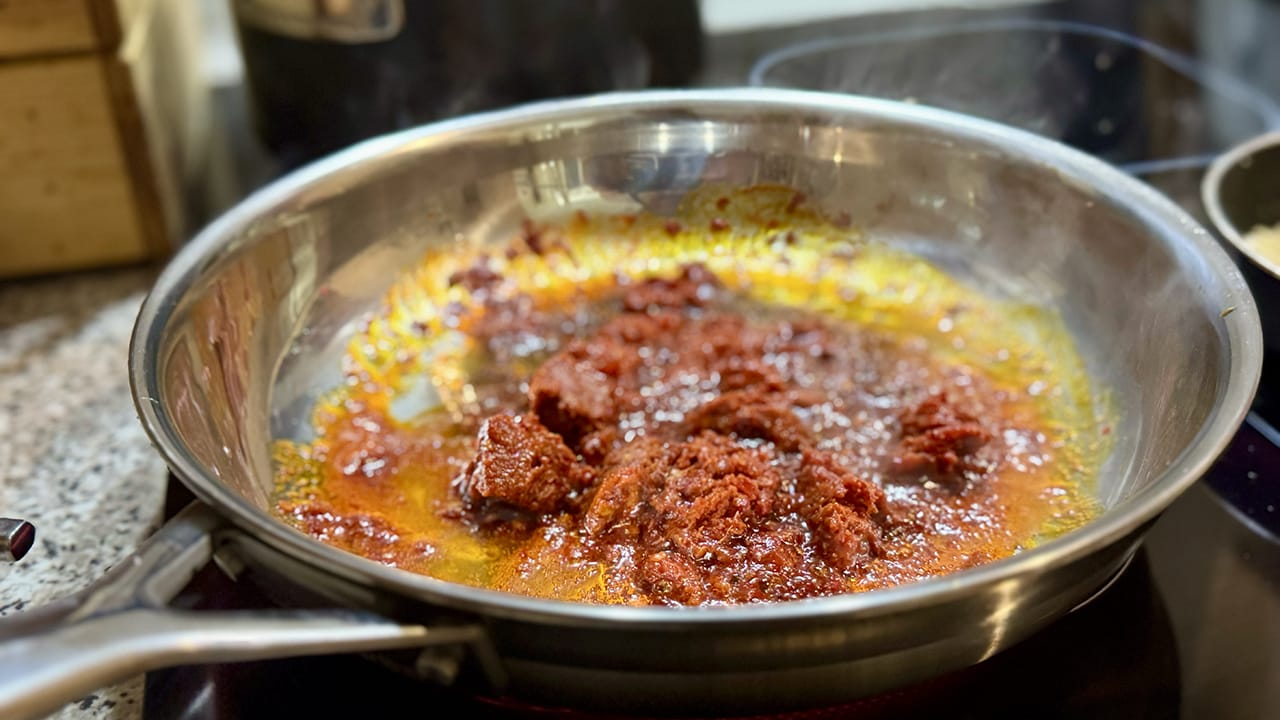
Once the ’nduja has fully rendered, it’s time to add our cream. Despite its high fat content, cream is still about 60% water, and we’re about to combine it with the fat released from the ’nduja. Since oil and water famously don’t mix, forming a stable emulsion can be quite tricky. Three things hinder an emulsion:
- Introducing the components too quickly;
- Not stirring the mixture enough;
- Too much heat.
To combat this, there are three things we’re going to do:
- Slowly pour our cream, while
- constantly whisking together, over a
- very low heat.
Remove the pan from the heat entirely, and slowly pour in your first drizzle of cream. Enthusiastically stir this into the ’nduja so that they combine. Continue adding, stirring, adding, stirring, until the sauce reaches your desired creaminess.
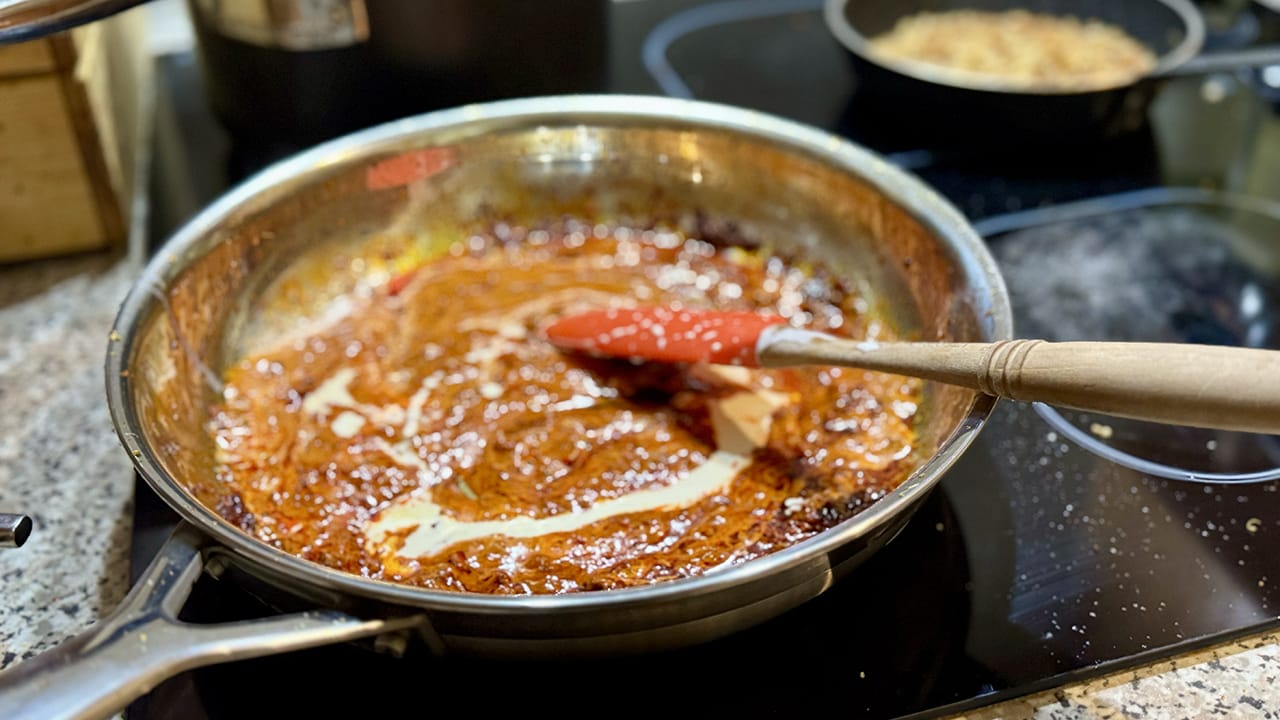
The secondary benefit of adding the cream slowly is that you don’t accidentally make a sauce that is too creamy. It’s easy to add more; it’s impossible to take away. As with any cooking, continually taste and adjust.
Once you’ve gotten the sauce to the desired consistency, still over minimal heat, you can hold it there while your pasta finishes cooking. Taste and adjust for seasoning.
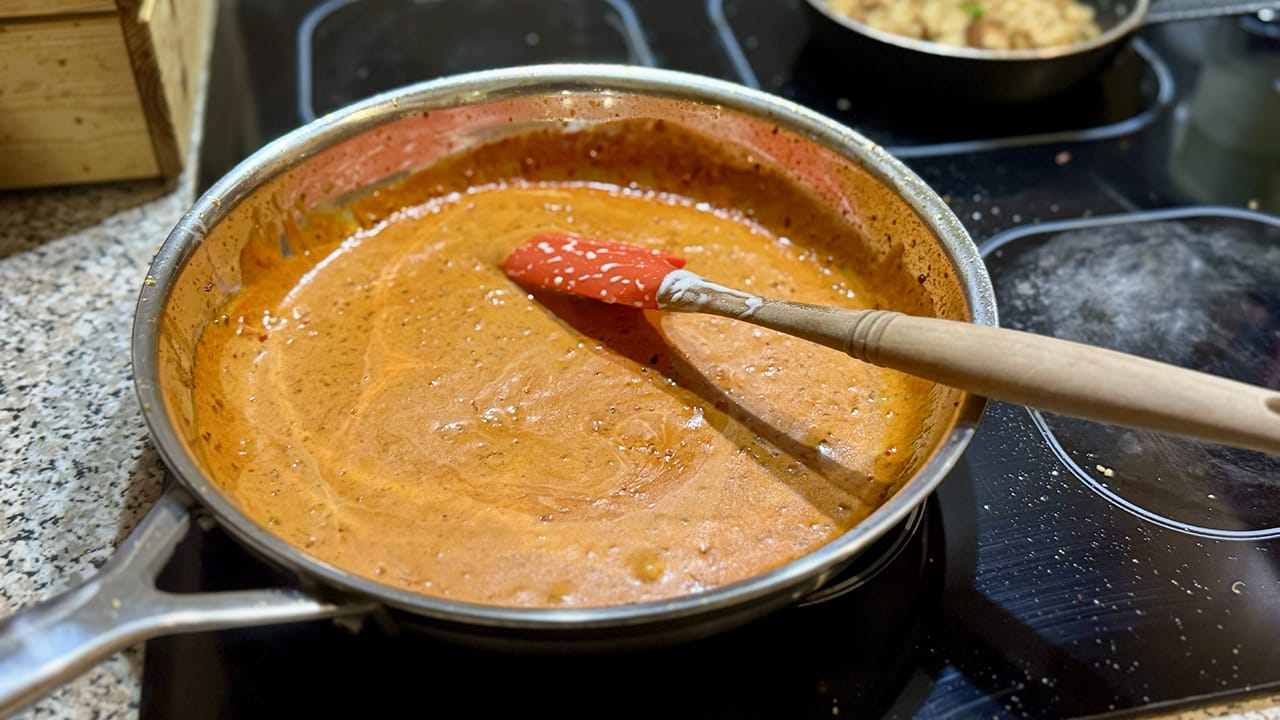
Once your pasta is ready, drain it but keep a cup of the starchy pasta water. Gradually add cooked pasta to the sauce and toss to combine. When you feel like the pasta has saturated the sauce and there isn’t enough liquid to coat what remains, add a drizzle of pasta water. This well lengthen the sauce without thinning it out too much. In fact, it will give it a beautiful consistency that you will hear as you toss it. Starch also helps sauces cling to pasta, meaning a well-combined plating.
Pasta water is a magical and valuable ingredient.
Continue adding cooked pasta and pasta water until you have genuinely reached the limit. If you have leftover cooked pasta, that’s no big deal.
Now stir in a handful of the chopped parsley and toss some more to mix.
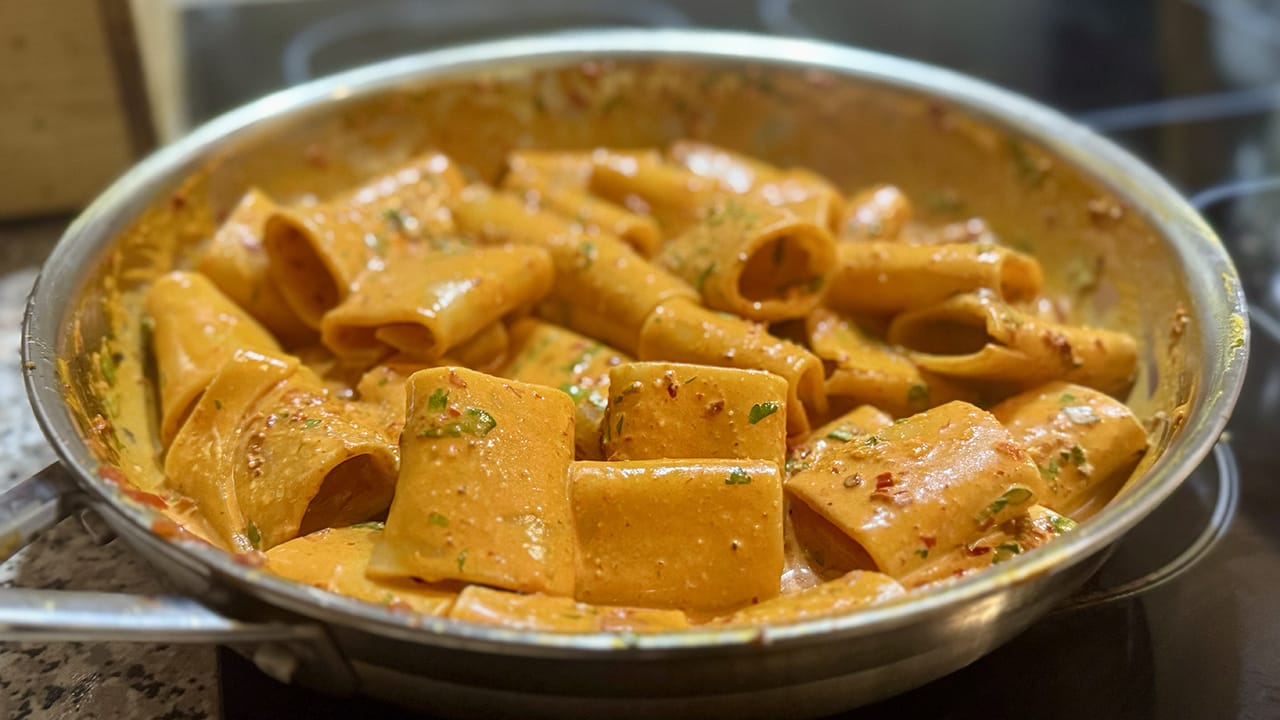
Oh, No! My Sauce Has Split!
If you’ve made a mistake, either by adding the cream too quickly or cooking it over too much heat, your sauce can split. This happens when the water in the cream separates from the fat, leaving you with a sauce that looks curdled—lumpy in some areas, with oily pools in others.
Don’t panic!
There are a few tricks to rescue a split cream sauce. One option is to blend it to re-emulsify, but that involves extra effort and washing up. Instead, remove the pan from the heat immediately and stir in an ice cube. The rapid cooling helps to stop further separation, and the water from the melting ice encourages the sauce to come back together.
That’s a really good pro-tip for any cream-based sauce right there.
Serve
Generously spoon the pasta out into your pre-warmed dishes. Ensure each piece of pasta has a good coating of sauce, or ladle more over if necessary. Sprinkle over a decent amount of the gratin, and enjoy!
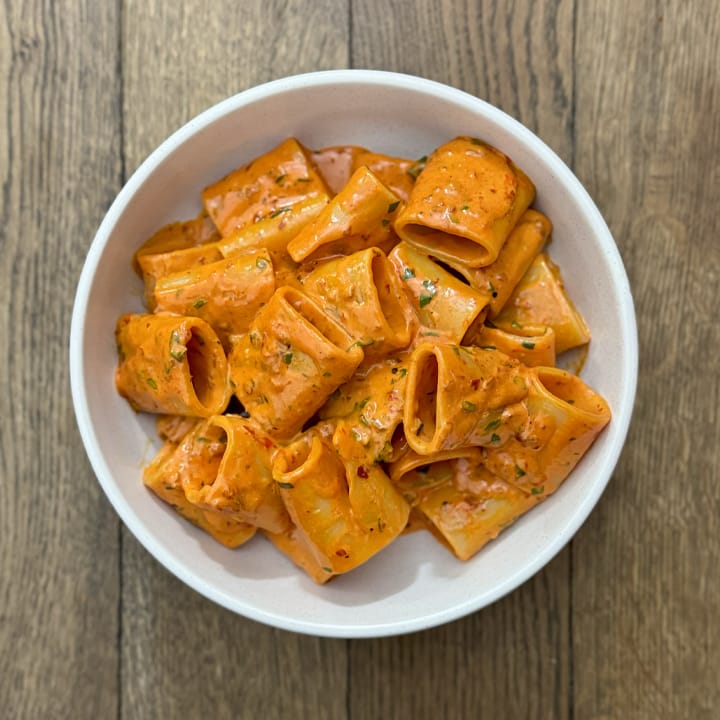

Leftovers
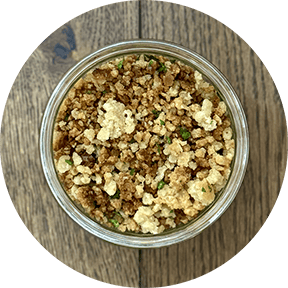
Got leftover gratin? Great! That stuff is delicious. Store at room temperature in an airtight container and sprinkle it on soups, roasted vegetables, a courgette salad, or other pasta dishes.
Leftover parsley? Use that in your shakshuka tomorrow morning.
Got some leftover cooked pasta? Coat it in good quality olive oil and black pepper and you have a great cold (if a little carby) snack.
Everything else can stay in your cupboard or fridge for another occasion.